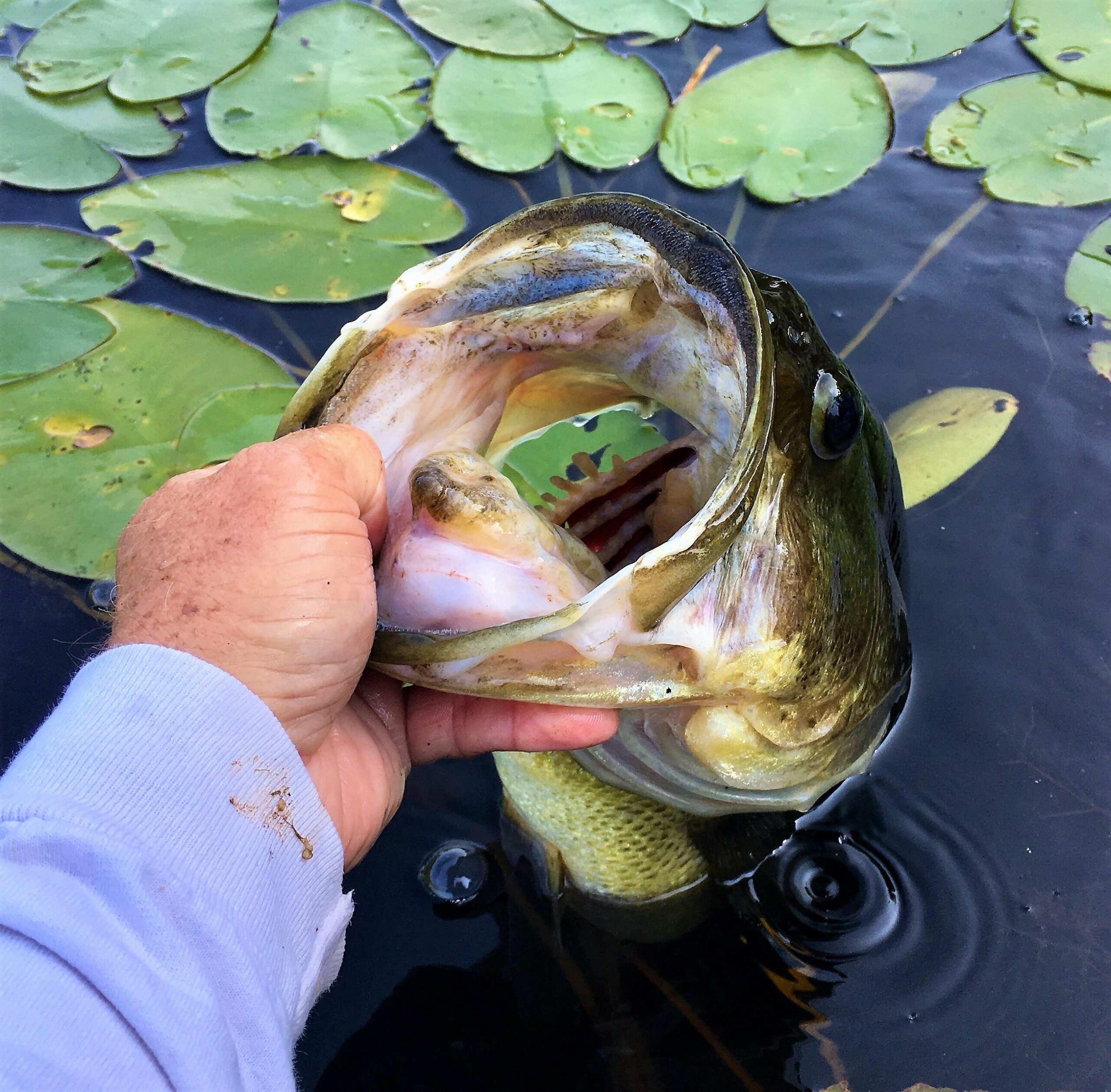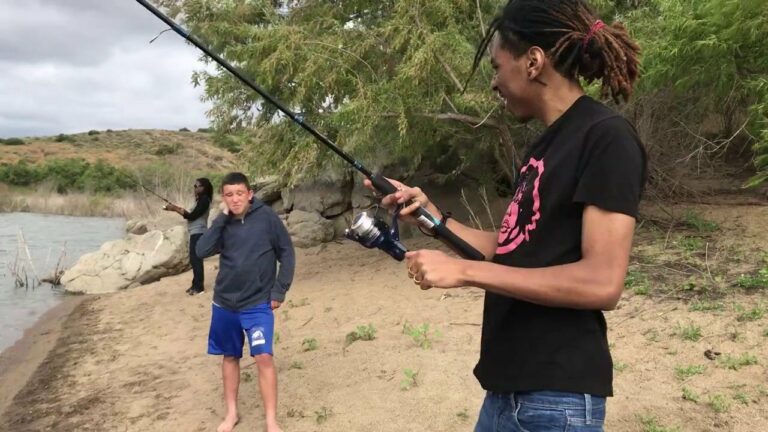Mastering The Art Of Catching Bass In A Pond: A Comprehensive Guide
Are you an avid angler on the lookout for some exciting bass fishing action? If so, you’ve come to the right place! In this article, we will explore the art of catching bass in a pond, offering you valuable tips and techniques to enhance your fishing experience. Whether you’re a seasoned pro or just starting out, our comprehensive guide will provide you with practical advice on how to effectively target and reel in those elusive bass. So, grab your gear, hop in your boat, and let’s dive into the world of pond bass fishing!
How to Catch Bass in a Pond
Fishing in a pond is a popular pastime, and if you’re looking to catch bass, you’re in for an exciting challenge. Bass are known for their aggressive nature and can provide an exhilarating fishing experience. In this comprehensive guide, we’ll cover everything you need to know about catching bass in a pond, from selecting the right equipment to understanding their behavior and effective techniques. So, grab your fishing gear, and let’s dive in!
Section 1: Understanding Bass Behavior
1.1. Habitat and Feeding Patterns
To increase your chances of catching bass in a pond, it’s crucial to understand their behavior and preferences. Bass are generally found near structures such as weeds, rocks, fallen trees, or submerged vegetation, as these provide cover and ambush points for them to hunt their prey. They are also more active during feeding times, which are typically early in the morning and late in the evening.
1.2. Seasonal Variations
Bass behavior can vary throughout the year due to seasonal changes. In spring, they are actively spawning and guarding their nests, making them more territorial and aggressive. During summer, bass tend to seek deeper, cooler waters and may be more sluggish. In fall, they start to feed heavily in preparation for winter, while their activity slows down in the colder months. Understanding these seasonal patterns will help you adjust your fishing techniques accordingly.
Section 2: Essential Equipment for Bass Fishing
2.1. Fishing Rod and Reel
A medium to heavy-action spinning or baitcasting rod and reel setup is recommended for bass fishing. The choice between spinning and baitcasting depends on your personal preference and fishing style. Spinning gear is easier to use for beginners, while baitcasting gear offers more control and accuracy for experienced anglers.
2.2. Fishing Line and Leader
When it comes to fishing line, opt for a monofilament or fluorocarbon line with a test strength between 10 and 20 pounds. These lines provide good strength and sensitivity for bass fishing. Additionally, using a leader, typically made of fluorocarbon, can help prevent line visibility and increase your chances of success.
2.3. Terminal Tackle
To effectively catch bass in a pond, you’ll need a selection of hooks, weights, and baits. For hooks, choose sizes ranging from 2/0 to 5/0, depending on the size of the bass in the pond. Worm hooks, offset hooks, and drop-shot hooks are popular choices. Pair your hooks with appropriate weights, such as bullet weights or split shot, to achieve the desired depth and presentation. As for baits, options like plastic worms, jigs, crankbaits, and topwater lures are commonly used for bass.
Section 3: Techniques for Catching Bass in a Pond
3.1. Casting and Retrieving
One of the most popular techniques for bass fishing is casting and retrieving. Start by selecting a suitable lure and casting it near structures or areas where bass are likely to hide. Allow the lure to sink and retrieve it with different speeds and pauses to imitate a wounded baitfish or prey. Experiment with variations in retrieval techniques until you find what works best on a particular day.
3.2. Flipping and Pitching
Flipping and pitching are effective techniques for precise presentations in tight spaces, such as under docks, around vegetation, or near submerged logs. With these techniques, you’ll be able to target specific areas where bass are likely to be hiding. Use a shorter fishing rod with heavier line and a soft plastic bait or jig. Dip the bait into the water, swing the rod tip forward, and release the line to accurately deliver the bait to the desired spot.
3.3. Topwater Fishing
Topwater fishing can be both exciting and productive, especially during early morning or late evening when bass are more active near the water’s surface. Use lures like poppers, buzzbaits, or frogs that create surface disturbance to trigger the fish into striking. Cast the lure, let it settle, and then use a combination of a steady retrieve and occasional pauses to mimic natural movement and entice bass to bite.
Section 4: Pond Fishing Tips and Strategies
4.1. Locating Bass in the Pond
To increase your chances of catching bass, it’s important to locate their whereabouts in the pond. Look for signs such as splashing or jumping fish, areas with submerged vegetation, or structures like fallen trees and rocks. Using a fish finder can also help you identify depth changes and underwater structures where bass might be hiding.
4.2. Adapting to Changing Conditions
Ponds are constantly evolving environments influenced by weather, temperature, and other factors. Bass may change their behavior and feeding patterns accordingly. Stay adaptable and be willing to switch techniques, lures, or locations if you’re not finding success. Pay attention to changes in weather, water clarity, and temperature to adjust your approach accordingly.
4.3. Catch and Release
While catching bass can be thrilling, it’s essential to practice responsible fishing by practicing catch and release whenever possible. Bass play a vital role in maintaining a healthy ecosystem, and releasing them allows them to grow, reproduce, and continue providing enjoyment for future anglers.
Now that you’ve learned the essentials of catching bass in a pond, it’s time to put your newfound knowledge into action. Remember to be patient, adaptable, and to respect the environment you’re fishing in. With the right equipment, techniques, and understanding of bass behavior, you’ll be well on your way to having a successful and enjoyable bass fishing experience. So, grab your gear, head to the nearest pond, and get ready for an unforgettable angling adventure!
How To Fish Small Ponds – Bass Fishing Tips
Frequently Asked Questions
What are some effective techniques for catching bass in a pond?
When fishing for bass in a pond, there are several techniques you can employ. One popular method is using artificial lures such as spinnerbaits, crankbaits, or soft plastic worms. These lures should be retrieved at varying speeds to mimic the natural movement of prey. Another effective technique is using live bait such as nightcrawlers or minnows. Additionally, casting near structures like fallen trees, docks, or vegetation can increase your chances of catching bass, as they often use these areas for cover and ambush prey.
What is the best time of day to catch bass in a pond?
The best time of day to catch bass in a pond is typically during the early morning or late afternoon. Bass tend to be more active during these times as the water is cooler, and they are more likely to feed. They are also more active in low light conditions, such as on cloudy days or during dawn and dusk. However, bass can be caught throughout the day, so it’s worth trying different times and adjusting your techniques accordingly.
What type of fishing gear is recommended for bass fishing in a pond?
When fishing for bass in a pond, it is recommended to use medium to heavy fishing rods with a fast action. A baitcasting reel paired with a heavy line (between 10-20 pounds test) is a popular choice. This setup provides the strength and control needed to handle larger bass and navigate through potential obstacles like vegetation or fallen trees. Additionally, using a variety of lures, hooks, and weights will allow you to adapt to different fishing conditions.
How important is it to understand the behavior and habitat of bass in a pond?
Understanding the behavior and habitat of bass in a pond is crucial for successful fishing. Bass are known to prefer areas with cover, such as submerged vegetation, fallen trees, or docks. They use these areas as ambush points to prey on smaller fish. By identifying and fishing near these structures, you increase your chances of catching bass. Additionally, knowing their feeding patterns, migration routes, and preferred prey can help you tailor your fishing techniques and increase your success rate.
What are some recommended techniques for catching bass during different seasons in a pond?
During the spring season, try using lures that imitate the movement of spawning prey such as jerkbaits or jigs. As the water temperature rises in summer, bass tend to become more active near the surface, so topwater lures like buzzbaits or surface poppers can be effective. In the fall, bass feed heavily to prepare for winter, so using crankbaits or spinnerbaits that resemble baitfish can be productive. During winter, when bass are less active, slow-moving lures like jigs or soft plastics can entice a strike.
What are some general tips for catching bass in a pond?
First, it’s important to be patient and persistent when fishing for bass in a pond. Experiment with different lures, retrieve speeds, and locations until you find what works best. Pay attention to the weather conditions, as they can affect bass behavior and feeding patterns. It’s also recommended to practice catch and release to help conserve the bass population and ensure future fishing opportunities. Lastly, don’t forget to check local fishing regulations and obtain any required permits before heading out to fish in a pond.
Final Thoughts
In conclusion, mastering the art of catching bass in a pond requires patience, skill, and knowledge of their behavior. By understanding their habits and preferences, anglers can increase their chances of success. Techniques such as using the right bait, casting in strategic locations, and adjusting to changing conditions can greatly improve the odds. Remember to be observant and adapt your approach accordingly. Always respect the environment and practice catch and release to ensure the sustainability of bass populations. So, next time you head out to fish in a pond, apply these tips and techniques to enhance your bass-catching skills.

